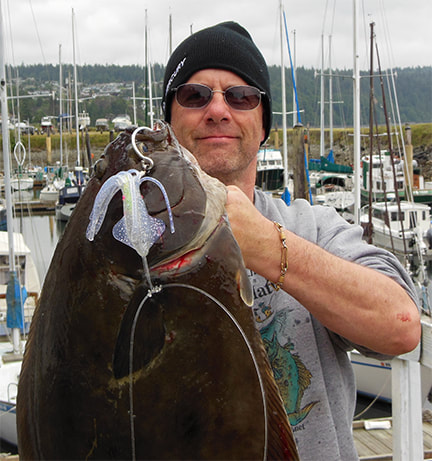 Area 2A is unique within the International Pacific Halibut Commission area because of the 13 Treaty Tribes that have fishing rights through Treaties and backed by court rulings. The Makah Tribe in Neah Bay submitted a written proposal for Area 2A to receive 1.5 million pounds of quota. Prior to the IPHC meeting several people and groups have endorsed this proposal, including Dave Croonquist and myself. During yesterday’s U.S. meeting the Tribe’s testified in support of their proposal as well as numerous others from California, Oregon, Washington and Alaska. Our three Commissioners also recognized Area 2A’s uniqueness because of the Treaties. Because of a catch sharing plan between Tribes, commercials and sports anglers, any increase in quota will result in more fishing days/quota for Washington sport anglers as well as sport anglers in California and Oregon. The catch sharing plan allocates 35% of the Area 2A TAC (Total Allowable Catch) to U.S. treaty Indian Tribes in the State of Washington and 65% to non-Indian fisheries in Area 2A. Simply put, an increase in quota helps everyone within the 2A IPHC area, not just the Tribes. Therefore we must support the Makah’s proposal of 1.5 million pounds for Area 2A. Some might wonder if the area can withstand this level of harvest. According to Tribal fisheries managers they say yes. “The Makah proposal for at FCEY (Fishery Constant Exploitation Yield) of 1.5 Mlbs, corresponding to a TCEY (Total Constant Exploitation Yield) of 1.65 Mlbs, that would benefit the entire area of 2A is based on historic removals from area 2A as well as current setline survey WPUE. In previous years with similar setline survey WPUE our catch area has supported maximum total removal of just over 2 million pounds without a substantial change of biomass within area 2A.” explains Joe Petersen, Makah Groundfish Biologist. “For reference in the period of 2002-2008 the average TCEY in area 2A was 1,794,000 lbs with a corresponding survey WPUE (Weight Per Unit Effort) of 23.8 lbs. From 2009-present the average TCEY was 1,270,000 with an average corresponding survey WPUE of 22.7 lbs. This represents a 30% reduction in quota with only a 4.7% reduction in survey WPUE. If the harvest levels had been to high from 2002-2008 one would expect to have seen some evidence of that in declining survey WPUE.” Also note, last year the IPHC setline survey showed few halibut off the Washington Coast because of the hypoxia event which resulted in an overall reduced quota recommendation. The argument from Tribal fisheries managers and the sports fishing community was simple — the survey took place during summer months after typical halibut harvest times and during an anomaly not consistent with the Washington Coast. Last year’s setline survey rebounded and showed increased numbers of halibut which we believe will support a quota of 1.5 million quota. Overall last year’s setline survey showed slightly higher numbers of halibut compared to 2018. The increase in halibut was likely due to “recruits” from six year old halibut entering the catch and from expanded areas in the setline survey. If the IPHC approves the Makah proposal of 1.5 million pounds of quota it would result in a Washington sport fishing quota of about 277,000 pounds, an increase of roughly 52,000 pounds as follows. Puget Sound — 77,549 pounds North Coast (Neah Bay La Push) — 128,187 pounds South Coast — 62,894 pounds Columbia River (Ilwaco) — 8,467 pounds The above numbers are estimates only and not yet agreed upon by IPHC. This is what the delegation from Area 2A is working to achieve while still supporting conservation and sustainability of the resource. As developments occur I will keep everyone informed. John Beat
0 Comments
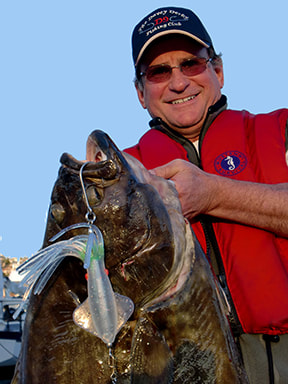 Marine areas 3-10 to re-open for halibut fishing; all-depth halibut fishery in Marine Area 2 to close Action: Marine areas 3 through 10 will re-open for halibut fishingThursday, June 7, Saturday, June 9 and June 16, 21 & 23. In Marine Area 2, the all-depth halibut fishery is closed effective immediately while the nearshore fishery will open seven days per week beginningSaturday, June 2. Effective dates and locations: Marine Areas 3-10: Open recreational halibut fishing Thursday, June 7, and Saturday, June 9. Marine Area 2 (Westport): Close the all-depth fishery effective immediately; open the nearshore area seven days per week beginning Saturday, June 2. Species affected: Pacific halibut Reason for action: There is sufficient quota remaining to continue the recreational halibut fishery in Marine Areas 3 and 4 (Neah Bay and La Push) and the Puget Sound region (Marine Areas 5 – 10) on Thursday, June 7, and Saturday, June 9, without risk of exceeding the quota. Through May 27, the total catch in the all-depth recreational halibut fishery in Marine Area 2 was 41,258 pounds, which is 93 percent of the quota and does not leave sufficient quota to open the all-depth halibut fishery for another day. However, some quota is reserved in this area to allow for a nearshore recreational halibut fishery once the all-depth fishery is closed. The nearshore area will open to recreational halibut fishing on Saturday, June 2, seven days per week until the quota is taken. The quota will be adjusted to include the remaining quota from the all-depth fishery. Other information: The nearshore halibut fishery in Marine Area 1 remains open seven days per week until further notice. These rules conform to management actions taken by the International Pacific Halibut Commission and the National Marine Fisheries Service. Information contact: Heather Reed, (360) 902-2487. Each year the International Pacific Halibut Commission conducts a setline survey. The above map shows a series of dots or “Stations” that the contracted long line vessels dropped long line skates with hooks spread 18 feet apart. Bait used was all the same throughout the survey, #2 semi-bright chum salmon. These surveys determine the health of the overall stock throughout the Pacific Halibut range. All totaled, the setline survey caught and kept 819,975 pounds of halibut and sold it for $4,706,403.00 which pays for the survey effort. The setline survey shows the catch rate via numbers of halibut caught for each area targeted with the long lines. As a sports angler this information is fascinating if you spend the time to investigate. The IPHC Set Line Survey Interactive Map https://iphc.int/data/fiss-data-query offers invaluable data. Once on the link watch the video on how to use the interactive map and then click on each dot where the survey was done. The catch data will show on the right side of the page. This data reveals some interesting data of halibut populations and which spots contain the highest numbers of halibut. In 2017 a massive hypoxia event occurred off the coast of Washington resulting in almost no halibut present in the purple area during the setline survey. In 2018 there was no hypoxia event and the halibut returned which bodes well for Washington halibut anglers. Last year’s setline survey revealed the following
“We are now down to the lowest numbers of halibut in our set line survey since the 1990’s,” said Dr. Ian Stewart from IPHC
I’ll keep all of you updated as the IPHC meetings this week continue. These meetings should result in seasons and quotas. 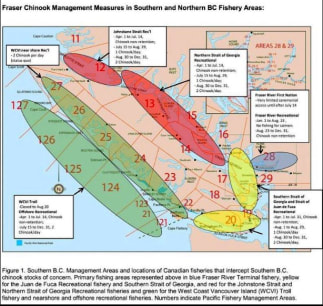 Fisheries managers on both sides of the border continue to mismanage our fisheries. This week WDFW announced massive Draconian cuts throughout Puget Sound. Meanwhile, British Columbia Fisheries managers announced massive no fishing zones that will have untold negative effects to the sport fishing community and tourism to the tune of 100s of millions of lost dollars to the province. “Trust us,” says the fisheries managers on both sides of the border. “We know what we are doing, and doing what we must to save endangered expected low runs of key Chinook runs.” I’m sorry, but I have no trust in this bunch of idiots. These fisheries managers are nothing more than bureaucrats protecting fiefdoms of fisheries control and power. These same fisheries managers on local, state and federal levels as well as politicians are responsible for the following. In Washington State
The Orca problem is one of the key issues across the border. And like Washington, Canadians don’t want to do anything meaningful to help the Orcas and instead focus on sports anglers. A recent report says a complete Chinook sport closure will only amount to less than 2% more Chinook for Orcas to eat. In my opinion Washington and British Columbia needs to do the following to help increase Chinook numbers as well as feed the Orcas 1. Reduce numbers of seals and invasive California sea lions. Yes, this means “lethal” removal. This means getting Feds to eliminate or drastically change Marine Mammals Protection Act
2. Increase hatchery production 3. Decrease or eliminate commercial harvest of herring 4. Eliminate ALL non-selective gill nets 5. Force NOAA to reduce by-catch of Chinook in Alaska. Hundreds of thousands of Chinook are killed as by-catch in the mid-water trawl fishery in Alaska 6. Clip ALL hatchery Chinook 7. Manage overpopulation of cormorants and mergansers. These birds eat millions of smolts and should be controlled We should all remember, there’s no money or continued control and power to restore our Chinook. From a bureaucrat’s point of view maintaining “status quo” maintains their jobs, power and control. The Chinook and Orca crisis is a multi-billion dollar industry that fisheries managers want to continue because it is profitable. Let’s end years of failed fisheries management policies and help the fish! Below are some of the major changes for Washington State Salmon 2019 to 2020 salmon seasons. Notable changes compared to 2018-19 season: Ocean Marine Areas 3 La Push & 4 Neah Bay June 22 to September 30 — Open for Chinook and hatchery coho. Areas will close when quotas are met. La Push has a 1,300 Chinook quota and 4,150 hatchery coho. Neah Bay has a 5,500 Chinook quota and 16,600 hatchery coho. Daily limit 2 salmon both areas. Marine areas 5 (Sekiu) and 6 (East Strait Juan de Fuca) are closed to salmon fishing in February. Area 5 — Sekiu open for Hatchery Chinook July 1 to Aug. 15 Hatchery coho and pinks open July 1 to Sept. 30. Daily limit of two salmon with no extra bag limit for pinks this season — there will be no bonus bag limits for pinks in any marine area in 2019. Marine Area 7 is closed to salmon fishing in August, October, and January. Marine Area 8-1 is closed to salmon fishing in December and January but open for coho fishing in October. Marine Area 8-2 will be open from Aug. 16 through Sept. 15 for hatchery coho from the Mukilteo/Clinton line south and west towards Marine Area 9. Similar to 8-1, this area will be closed to salmon fishing in December and January. Marine Area 9 opens slightly later (July 25) this year with a lower quota for Chinook (3,500 fish) and is closed in January. Elliott Bay in Marine Area 10 is scheduled only to be open the first weekend in August, however, additional openings could be added during August. Marine Area 10 will open July 25 for chinook fishing. The Area 10 summer quota is 3,057 chinook. Last year it was 4,743. Marine Area 11 is closed in June and then again from October through December. The area quota for the summer (July through September) is 2,800 chinook. In order to maximize opportunity for chinook, boat fishing will be open five days per week (Saturday through Wednesday) while shoreline fishing will be open daily. Marine Area 12 (north of Ayock) will open in August (a month earlier than 2018) for coho fishing. In Marine Area 13 there will be a 20-inch minimum size for chinook July through September. Columbia River The summer salmon fishery will be closed to summer Chinook (including jacks) and sockeye retention due to low expected returns this year. Fall salmon fisheries will be open under various regulations. Waters from Buoy 10 upstream to the Hwy. 395 Bridge at Pasco will open to fall salmon fishing beginning Aug. 1. In other words, if you are successful in Canadian waters you MUST call 1-800-562-5943 or use the new CBP-Roam App. The app is awesome and uses your phone’s GPS, which must be turned on to allow the app to know where you are. You can only use the app when in U.S. waters. The app allows you to create an account and input your travel documents, passsport, Nexus or Enhanced Driver’s License. You can also have a list of contacts with your app to make it easy when using the app. The app requires you to take a picture of your documents for each person as well. Another cool feature is the video chat. If U.S. Custom’s officials want a face-to-face interview they simply switch on the video chat saving you from having to go to the Custom’s dock.
Also note, as stated below, the old Small Vessel Reporting System is no longer in use. Please read the text below explaining the new CBP-Roam App and how it works. CBP Reporting Offsite Arrival – Mobile (ROAM)Beginning September 5, 2018, SVRS will no longer be in service and float plans will no longer be accepted. Boaters looking for a new, faster way to report their arrival and/or apply for a registered boater program may use the CBP ROAM app, available for free on the Apple App and Google Play stores. Boaters may also continue to report their arrival via designated telephone reporting numbers, if desired. As part of U.S. Customs and Border Protection’s (CBP) comprehensive effort to improve the security of our nation’s borders while enhancing legitimate travel, CBP has launched the CBP Reporting Offsite Arrival – Mobile (ROAM) app. Pleasure Boat Reporting RequirementsPursuant to 19 CFR 4.2, operators of small pleasure vessels, arriving in the United States from a foreign port or place to include any vessel which has visited a hovering vessel or received merchandise outside the territorial sea, are required to report their arrival to CBP immediately (see 19 U.S.C. 1433). The master of the vessel reports their arrival at the nearest Customs facility or such other place as the Secretary may prescribe by regulations. These reports are tracked in the Pleasure Boat Reporting System. Pursuant to 8 CFR 235.1, an application to lawfully enter the United States must be made in person to a CBP officer at a U.S. Port of Entry (POE) when the port is open for inspection. Click here for more information on CBP reporting requirements. Overview of CBP ROAM APPThe CBP ROAM app is a free mobile application that provides an option for pleasure boaters to report their U.S. entry to CBP via their personal smart device or a tablet located at local businesses to satisfy the above reporting requirements. In limited areas, travelers arriving in remote locations may also be eligible to use the CBP ROAM app. Contact your local POE to confirm arrival notifications via the CBP ROAM app are accepted. The CBP ROAM app also qualifies as an Alternative Inspection System that satisfies the boat operator’s legal requirement to report for face-to-face inspection in accordance with 8 CFR 235.1 with some exceptions:
Getting StartedTravelers should download the CBP ROAM app on their web-enabled smart device. Note that a free login.gov account is required to use the CBP ROAM app. After opening the CBP ROAM app, tap “Sign In”.
AvailabilityTo use CBP ROAM on your personal smart device, download the app from the Apple App Store or the Google Play Store. In certain locations, the CBP ROAM app can also be accessed on tablets at partner locations. For any questions or concerns about the CBP ROAM app, please email us at cbproam@cbp.dhs.gov. |
- Home
- Halibut Fishing Tackle Store
- Halibut Fishing Blog
- Halibut Fishing Maps
- Halibut Articles
- Contact Us
- Halibut Fishing Videos
- About Us
- SHIPPING & RETURNS
- Store Policy
- Halibut Tips And Tricks
- Halibut Boats
- Halibut Resorts
- Weather and Tides
- Size Chart
- Halibut Comments
- Halibut Recipes
- Big Catches
- Halibut Photos
- Spoons
- Christmas Special
Important Links
| Salmon Fishing Lures | Ball Bearing Swivels | Halibut Fishing Tackle | Super Squids | Deep Stinger Jigs |
| Kenai River King Salmon | Lingcodfishing.net | GoFishMagazine.com | Dartjigs.com | TunaFishingLures.com | BriteBiteTackle.com | |UnderwaterFishingLights.net | FishingTackleStore.net | SportShrimping | Halibut Chronicles | Salmon Chronicles
| SquidLures.com | | Lets Talk Oudoors YouTube Channel | | DeepStinger.com |
| Kenai River King Salmon | Lingcodfishing.net | GoFishMagazine.com | Dartjigs.com | TunaFishingLures.com | BriteBiteTackle.com | |UnderwaterFishingLights.net | FishingTackleStore.net | SportShrimping | Halibut Chronicles | Salmon Chronicles
| SquidLures.com | | Lets Talk Oudoors YouTube Channel | | DeepStinger.com |
©2023 by Halibut
Copyright John L. Beath
Copyright John L. Beath


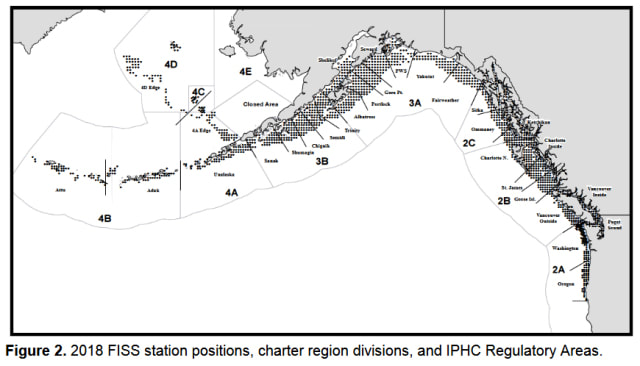
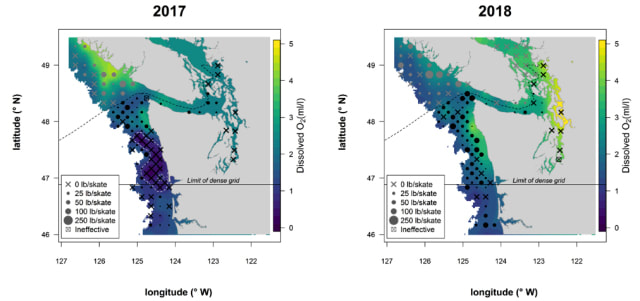
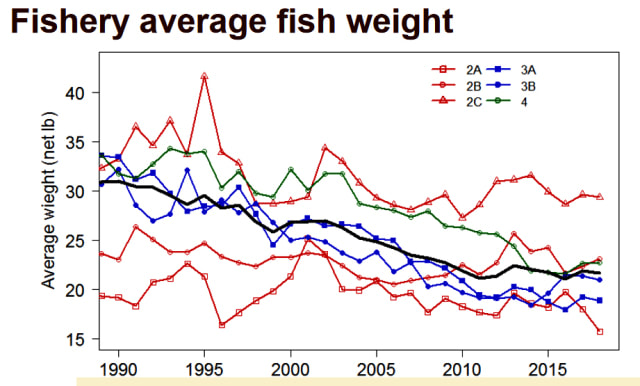
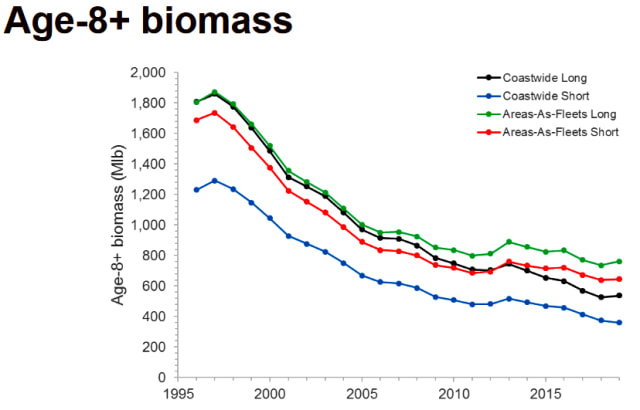
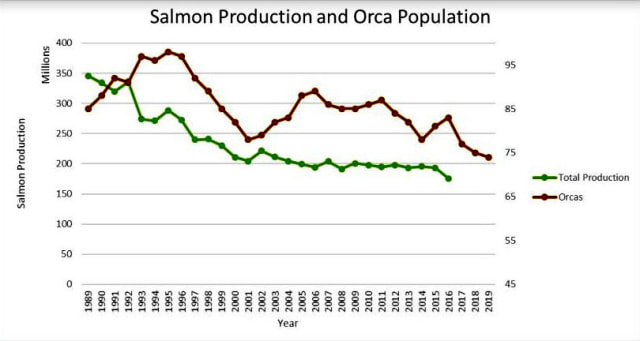
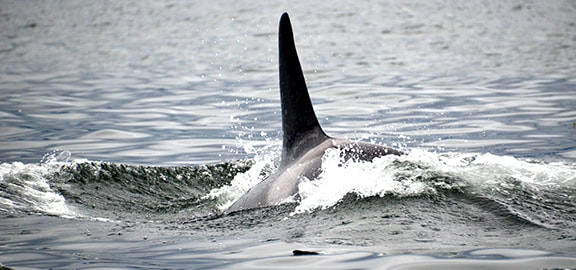
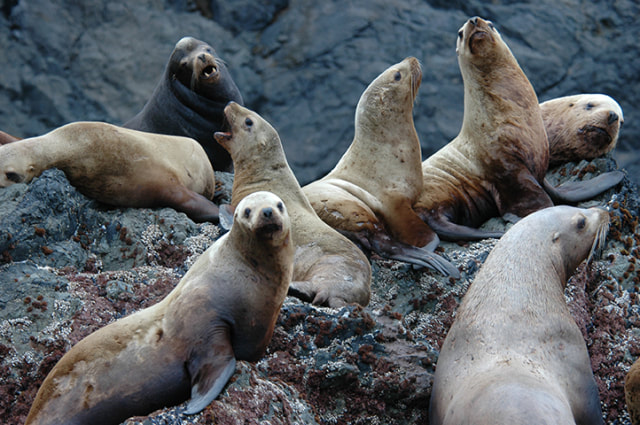


 RSS Feed
RSS Feed